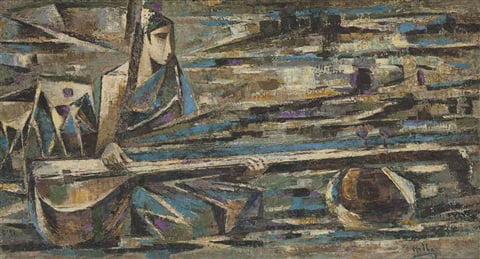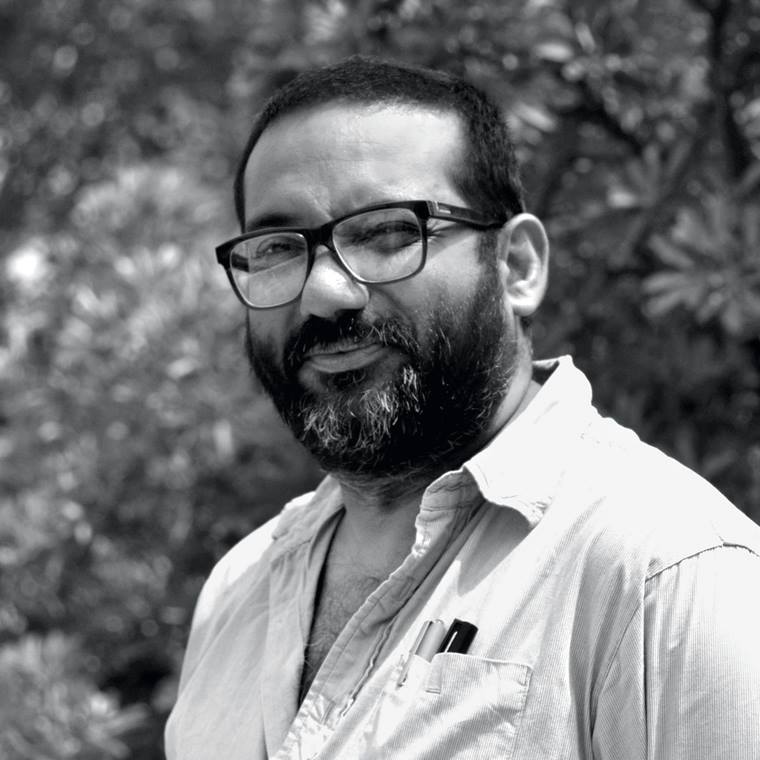Kattingeri Krishna Hebbar was born in 1911 in Kattingeri near Udupi, India in a Kannada speaking Shivalli Madhwa Brahmin family. Hebbar was inclined towards art from his childhood, because his father was an occasional sculptor who used to make Ganesha idols. Coming from an artistic family background Hebbar pursued art and formally studied at the J. J. School of Art in Mumbai between 1940 and 1945.
Hebbar’s early artworks were called his Kerala phase because of his depiction of the landscapes of the regions of Malabar and Tulu Nadu. Later he experimented with other themes.

Hebbar drew inspiration from myriad sources including the writings of art historian Ananda Coomaraswamy, Jain manuscripts, Rajput and Mughal miniatures, the paintings at the Ajanta Caves, and the art of Amrita Sher-Gil. He also studied at the Academie Julian in Paris, where he developed his appreciation for European modernism.
He first won international audiences at the Art Now In India exhibitions in 1965 which were held in London and Brussels. Hebbar participated in various international art exhibitions like the Venice Biennale, São Paulo Art Biennial and Tokyo Biennale. Today, his artworks are considered highly influential in Indian Art History.

Vikash Kalra is a self-taught artist and writer based in New Delhi whose work has been exhibited across India and is held in several private and corporate collections.